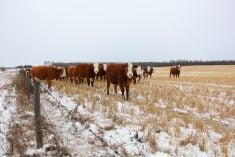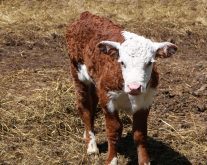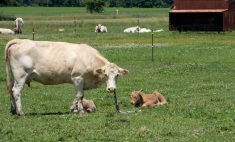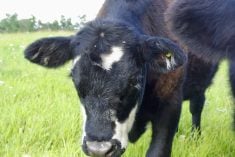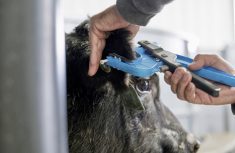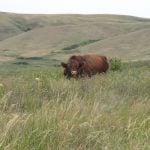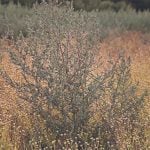I graduated from the Western College of Veterinary Medicine in 1970, a farm boy’s dream that never faded from 12 years old onward. The day I walked across the stage six years after starting university and received a rolled-up degree wrapped in ribbon, I whispered to myself, “I’ve done it. I will be a large animal practitioner until I can’t do it anymore.”
Getting rich was never a part of being a veterinarian. I just wanted to serve the cattle and horse industries somewhere in Western Canada. Opportunity presented itself at the Regina Animal Clinic where Dr. Harold Hunter ultimately sold me his large animal practice. Off I went, equipped with the delusion that large animal practice would last forever for me.
Read Also

Canadian Beef Check-Off Agency reports on investments and activities
The check-off agency’s work behind the scenes is what ensures cattle check-off dollars are invested wisely, accounted for transparently and deliver measurable value back to producers and importers.
The romantic part of being a veterinary practitioner developed cracks about eight years out. There remained no doubt I should have done things differently, out of a clinic, rather than pounding down the road through ruts and over snowbanks. As long as I could see the hood ornament, I travelled across a practice area that covered a 100-kilometre circle around Regina. The advent of European cattle genetics in Canada meant hundreds of caesarean sections in cold barns and hay shed lean-tos. Prolapsed uteri and vaginal lacerations filled the time between urgent obstetrical calls, many after neighbourhood quacks took their turn.
Starting in January and ending in April, I ultimately grew tired of young heifers trying to have 120- to 140-pound calves through left-hand flank incisions. Sixty to 70 thousand miles per year (roughly 100,000 km) added to sleep deprivation. Weeks flew by while three young boys grew. Once, I ended up on a rock pile after leaving a frozen, rutted road in early spring.
When calving season ended, racetrack clients began their calls for service. Floating teeth, deworming, suturing lacerations and colics captured time that calvings had relinquished.
One call stands out. On a February after midnight in 1979, Bud called from Tregarva.
“Sorry to bother you Doc, but I have a calf trying to have a calf. Not sure how she got bred, but I need your help. Probably a caesarean. Sorry it’s so cold. Maybe I should just shoot her.”
“No, Bud. I’ll be right out. Should be there in an hour.”
“Anything you need?” Bud asked.
“Just a boiling pail of water. It’s -36 F with a 30-mph wind. Is your road clear?”
Bud responded, “I’ll meet you at the grid to be sure.”
The heifer stood calmly tied to a post in the barn as if anticipating what heroic events were to unfold to extract the fetus within her. Bud had arranged two bales covered in a towel to hold the instrument tray. The little heifer made no attempt to kick or even move as I clipped her and placed a perfect paravertebral block. The only movement from my patient during the delivery through a small flank incision and subsequent suturing turned out to be her gasp with the inrush of -30 F air when I entered the peritoneal cavity. From start to finish, the entire surgery lasted approximately 20 minutes. Bud covered the struggling calf with saddle blankets through its restless search for warm colostrum. Without looking, I dropped my needle driver into the instrument tray with a resounding clunk. The tray had frozen.
I gathered my instruments and equipment, put them into the idling car, helped Bud transport the calf to his house on the children’s toboggan to dry it off. A few days later, Bud stopped by the clinic to drop off a bottle of whiskey in appreciation for the effort our practice made. The heifer never missed a meal; the calf stood and suckled within a few hours.
“Don’t know how you guys do it,” he commented.
The entire event could be classified as a success other than the fact I had made my mind up to leave practice. Arrangements were completed to sell the practice to my partner and the new entity started to build a clinic facility. My time in practice reached a turning point.
On my way home from Bud’s that cold and blustery night, I said to myself, “I’m much too young to feel this damn old.”





